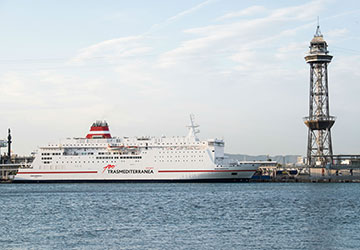
-
Recent Searches
Recent Searches
- Travel Alerts
- My Account
- Customer Service
-
United Kingdom
Arrecife to Santa Cruz de Tenerife Ferry
The Arrecife Santa Cruz de Tenerife ferry route connects Lanzarote with Tenerife and is currently operated by 2 ferry companies. The Trasmediterranea service runs up to 1 times per week with a sailing duration of around 17 hours 1 minute while the Naviera Armas service runs up to 1 times per week with a duration from 10 hr 20 min.
So that’s a combined 2 sailings on offer per week on the Arrecife Santa Cruz de Tenerife route between Lanzarote and Tenerife. Compare now and get the best fare at the time that you want to travel.
Arrecife - Santa Cruz de Tenerife Ferry Operators
-
- 1 Sailing Weekly 17 hr 1 min
- Get price
-
- 1 Sailing Weekly 10 hr 20 min
- Get price
Average Arrecife Santa Cruz de Tenerife Prices
Prices shown represent the average one way price paid by our customers. The most common booking on the Arrecife Santa Cruz de Tenerife route is a car and 2 passengers.
Arrecife Guide
Located on the Spanish island of Lanzarote, one of the Canary Islands, the city of Arrecife derives its name from the reef ('Arrecife' is Spanish for 'reef') which covers the beach in the city. The town, which also has a port, lies on the east coast of the island and is served by ferries to the other islands in the Canary Islands and also to other destinations in Europe and mainland Africa.
Popular attractions in the city include Al Charco San Gines which is a salt water lagoon in the city centre surrounded by fisherman's huts. There is also the declared Historical Monument of La Casa de Los Arroyo which contains the "Blas Cebrera" Scientific Centre.
Destinations available from the port include Cadiz, Las Palmas, Santa Cruz de La Palma and Huelva.
Santa Cruz de Tenerife Guide
Santa Cruz de Tenerife is a port city located on the Spanish island of Tenerife, the largest of the Canary Islands. The city has an important port and is filled with wide streets, beautiful landscaped areas and some fine examples of modern architecture. The city can trace its back around 400 years when the city began to develop in the late 16th century aided by its port which enabled to city to become the second most populated city in the Canary Islands. The centre of the city sits on the site of the former fortress of San Cristobal and is looked over by the monument dedicated to the Triumph of Candelaria, which is a neoclassical sculpture in Carrara marble and was created by the Italian Pasquale Bocciardo. This part of the city is also overlooked by the 18th century Baroque facade of the La Carta Palace. In the centre of the city, near the sea, several of the busiest streets and squares of the capital meet, such as the Plaza de la Candelaria.
From the city's port there are ferry services departing to mainland Spain and to the other Canary Islands.



